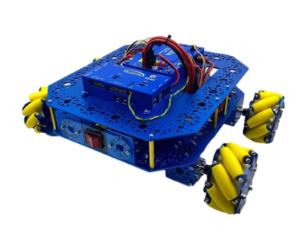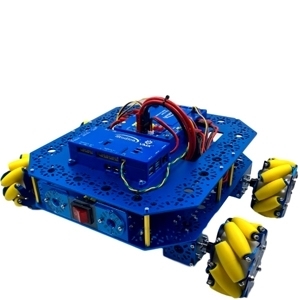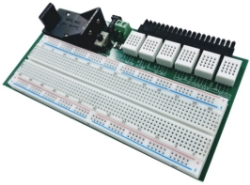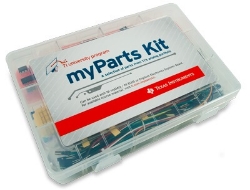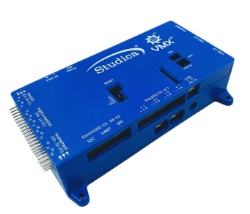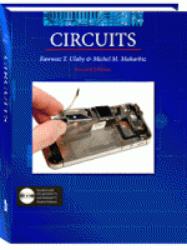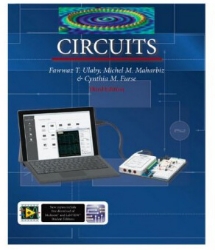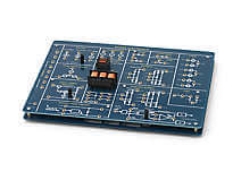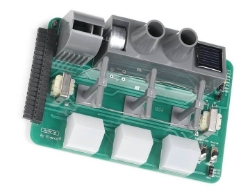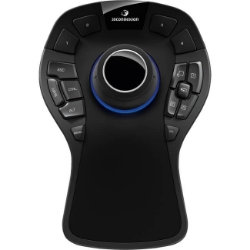Hardware
Hardware
myDevBoard - Prototype Board
The myDevBoard is an accessory board designed to connect directly to the NI myDAQ hardware. The Protoboard consists of a prototyping space as well as each I/O line from NI myDAQ broken out through quad contact blocks to make wiring easier.
myParts Kit from Texas Instruments: Companion Parts Kit for NI myDAQ
The kit comes with a collection of parts that are the building blocks of all electronics, including op-amps, an instrumentation amplifier, a comparator, voltage regulators, switching regulators, digital logic gates, timers, temperature sensors, data converters, transistors, resistors, capacitors, LEDs, switches, a wiring kit and more.
STEM Electronics
Explore the basic principles behind electronics.
- Main topics Electrical circuits, resistors, measurement of current and voltage, principle of the electric motor, semiconductors, transistor circuits
- Includes downloadable teaching and activity material (free download)
- Components in this set include: XS motor, 2 push-button switches , 2 diodes, 2 transistors, 3 resistors, 2 capacitors, and a holder for 9V battery (battery not included).
- Ideal accessories Accu Set, PowerSet
VMX Robotics Controller
The Studica Robotics VMX (part #70176) is a powerful robotics controller with technology for enabling a rich development environment. The VMX is a Linux-based computing platform with software tools and features enabling access to cutting-edge sensors.
Circuits Textbook, Second Edition - On sale while quantities last!
Circuits, Third Edition Textbook
Circuits, Third Edition Textbook helps students understand a wide range of timeless principles and problem techniques that are essential to circuit studies. Generally, circuit theory is the entry course in pursuing education in electrical and computer engineering. While this book is a great introductory text, a background in physics and elementary differential and integral calculus is assumed.
Integrator Power Electronics Lab
Introductory Power NI ELVIS Electronics Device—The Integrator Power Electronics Fundamentals Board for NI ELVIS II/II+ is an add-on application board for the NI Educational Laboratory Virtual Instrumentation Suite II (NI ELVIS II) or NI ELVIS II+ for power electronics applications. The Integrator Power Electronics Fundamentals Board for NI ELVIS II/II+ provides both the hardware and lab resources necessary to teach these topics, giving students all components, wires, and instruments needed conduct experiments. The accompanying software includes all lab instructions and provides students with a simple method of conducting and exporting results of experiments for each lab.
myTemp for NI myDAQ
The myTemp Mini System uses on analog input channel to read three thermistor inputs, and another analog input can be switched among four additional thermistor inputs or an AUX input terminal.
myGrid for NI myDAQ
The myGrid for NI myDAQ is an AC power grid that will help a student investigate the components of a power grid. The myGrid interfaces with NI myDAQ to demonstrate energy monitoring, energy conservation, and the concept of the smart grid. The system includes a traditional power source through a motor representing fossil fuels and a renewable power source using a solar panel. It models how power is generated, transmitted, and distributed in a residential setting across three houses.
3Dconnexion SpaceMouse Pro
3Dconnexion SpaceMouse Pro is the latest addition to 3Dconnexion’s line of professional 3D mice. It features a full size, soft coated hand rest and 15 large, fully programmable function keys for access to application commands, standard views and keyboard modifiers while a convenient On-screen Display provides visual support.














